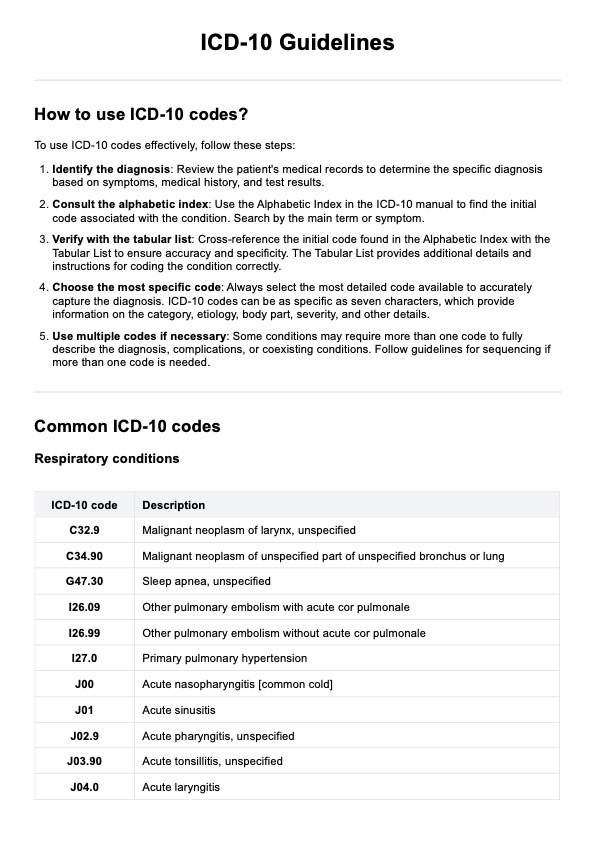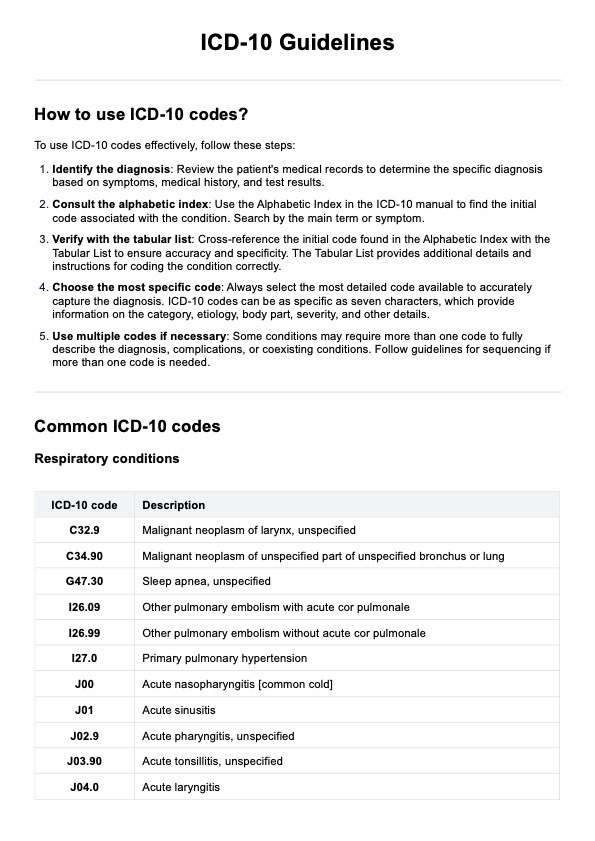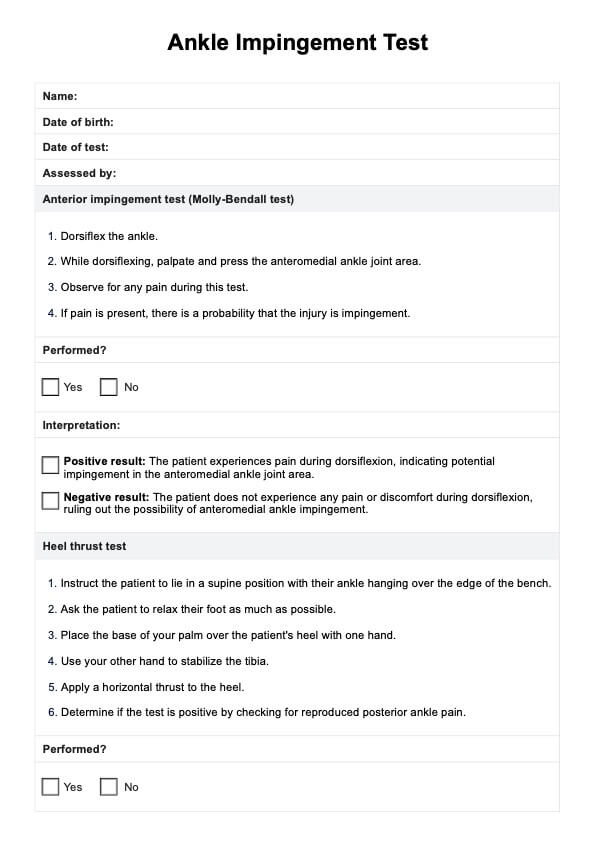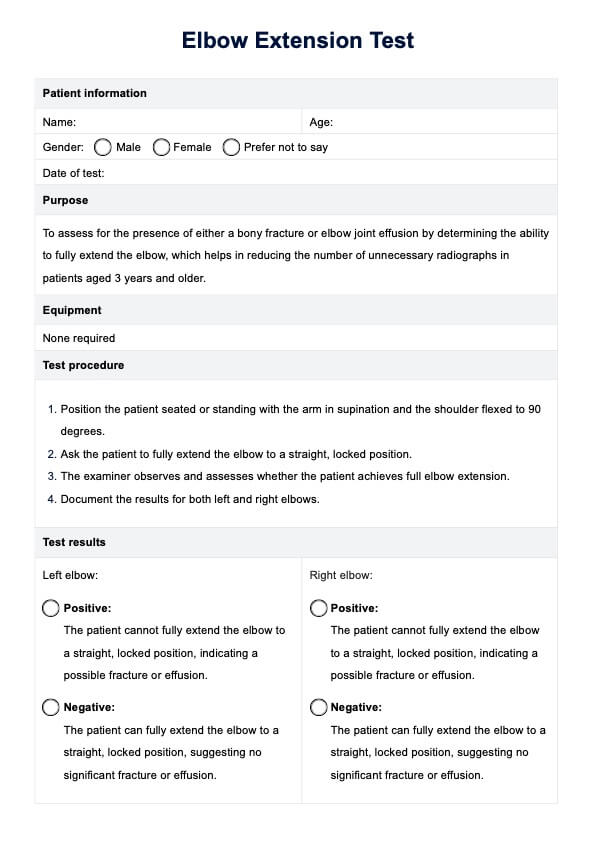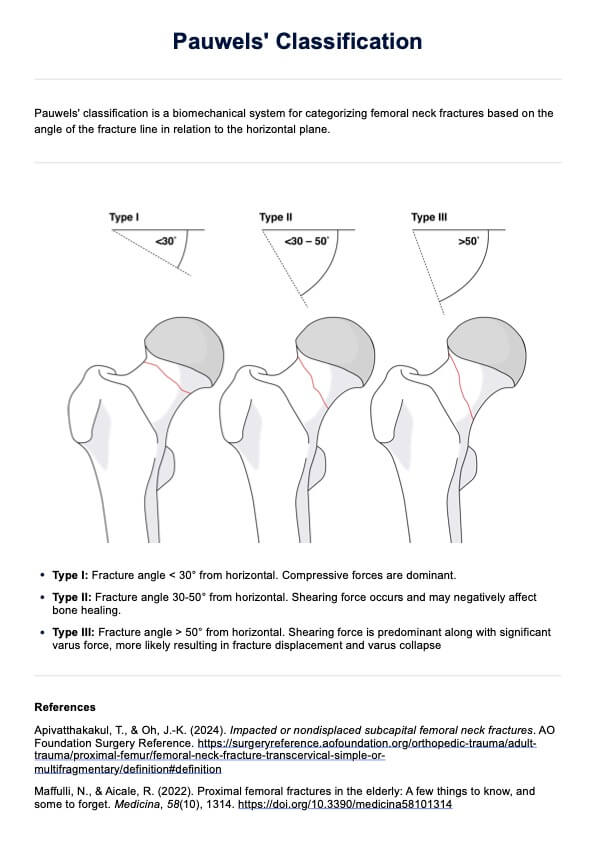ICD-10 Guidelines
Explore our detailed ICD-10 guidelines & download a free PDF example for accurate medical coding.


What are ICD guidelines?
The International Classification of Diseases (ICD) guidelines are a set of comprehensive and universally accepted rules developed by the World Health Organization (WHO) for classifying and coding health conditions and diseases. The Centers for Disease Control and Prevention (CDC), in collaboration with WHO, plays a crucial role in revising and updating the ICD-10 CM guidelines, ensuring they meet contemporary healthcare needs.
These guidelines enable systematic global reporting, analysis, interpretation, and comparison of mortality and morbidity data. Utilized by healthcare centers worldwide, this standardized classification supports healthcare management, epidemiology, information services, and treatment decisions, facilitating international health trends and outcomes monitoring.
The ICD codes are also crucial for administrative purposes, including insurance billing and healthcare reimbursements, especially in accurately documenting treatments involving drugs. These guidelines ensure a standardized approach to recording and classifying diseases, injuries, and other health problems across various healthcare systems worldwide.
ICD-10 Guidelines Template
ICD-10 Guidelines Example
Importance of ICD 10 guidelines
The ICD-10 guidelines, representing the tenth revision of the International Classification of Diseases, are critical for the effective functioning of healthcare systems worldwide. Adopted in the late 1990s, these guidelines have brought about significant improvements across several domains:
- Improved clinical accuracy and detail: ICD-10 offers more detailed coding options than its predecessor, ICD-9, enabling clinicians to diagnose and treat patients more precisely.
- Enhanced epidemiological tracking: With its expanded code set, ICD-10 allows for more accurate tracking of disease patterns and epidemiological trends. This capability is crucial for public health monitoring, outbreak response, and long-term health planning.
- Improved billing and administrative accuracy: The specificity of ICD-10 codes helps streamline the billing process by reducing ambiguities and reducing the incidence of billing errors and claim denials.
- Facilitation of international data comparison: The use of ICD-10 enables more consistent health data comparison across countries. This standardization is essential for global health research, policy-making, and sharing medical best practices.
- Supporting research and development: The detailed data collected using ICD-10 codes aids researchers in understanding disease processes and patient outcomes more thoroughly, which is beneficial for advancing medical research and developing new treatments.
Basic coding guidelines for ICD-10
The ICD-10 is a comprehensive global coding system for diagnosing and coding health conditions. Here are some essential guidelines for using ICD-10:
Locating a code
Begin by locating the condition in the Alphabetic Index, then verify it in the Tabular List. This ensures accuracy since the Alphabetic Index might not provide the complete code, especially for codes that require additional characters. Always cross-reference the code in both lists to ensure the code is as specific as possible.
Level of detail in coding
Codes must be reported with the highest level of specificity available. ICD-10 codes can range from three to seven characters. Codes with three characters are headings and must be expanded if more detail is available. A code is invalid if it lacks the necessary characters, including any required seventh character.
Multiple coding for a single condition
Some conditions require multiple codes to describe them fully. Use the "use additional code" notation to determine if a secondary code is needed. Follow the etiology/manifestation convention, coding the primary condition first, followed by the secondary code.
Combination codes
Combination codes classify two diagnoses: a diagnosis with a secondary manifestation or a diagnosis with a complication. These codes are listed in the alphabetic index and tabular list and should be used when fully describing the conditions. If more detail is needed, an additional code may be required.
Sequela (late effects)
Sequela refers to the residual effects after the acute phase of an illness or injury. Coding sequela generally requires two codes: one for reporting the residual condition and one for the sequela.
Use of sign/symptom/unspecified codes
Use sign/symptom and unspecified codes when a definitive diagnosis is unavailable. These codes should reflect the highest level of certainty known during the encounter. Specific codes should be used when documentation and clinical knowledge support them, but sign and symptom codes are appropriate when a definitive diagnosis is not determined.
Coding impending or threatened conditions
For conditions described as "impending" or present or "threatened":
- If the condition occurred, code it as confirmed.
- If it did not occur, use the Alphabetic Index to find subentry terms for "impending" or "threatened" and assign the appropriate code.
- If sub-terms are not listed, code the existing underlying condition(s).
How does our ICD-10 guidelines template work?
Our ICD-10 guidelines template is designed to provide healthcare professionals with a structured and easy-to-navigate system for accurately coding various medical diseases and conditions. This comprehensive template encompasses multiple categories of diseases and conditions, such as respiratory, cardiovascular, gastrointestinal, musculoskeletal, mental health, infectious diseases, neurological conditions, and common symptoms and signs.
The template groups conditions by system or cause and provides clear descriptions for each code, reducing the likelihood of coding errors. This is especially beneficial in complex scenarios where multiple conditions with similar symptoms or diseases may impact multiple body systems, such as diabetes or autoimmune disorders.
Commonly asked questions
The golden rule of ICD coding is to code to the highest level of specificity, ensuring that the most accurate and detailed codes are used to reflect the patient's diagnosis and condition.
Yes, ICD coding guidelines are updated annually to reflect new medical knowledge, treatments, guidelines, and practices, ensuring that coding remains current and accurate.
Accurate ICD coding is crucial for proper billing and reimbursement and maintaining patient health


